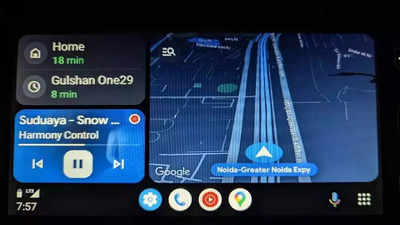
Google plans to drop support for older versions of Android in Android Auto. Strings of code found in the latest version of Android Auto indicate that Android Oreo will be the minimum OS requirement. Users will see warnings on their car's infotainment screen. To continue using Android Auto, users need to update their phone to at least Android Oreo or get a new device if their current device no longer receives updates.
To keep its apps and services updated with new and advanced features,
keeps dropping support for older devices or at least devices running older versions of the operating systems. Recently, Google dropped support for Chrome web browser from Android Nougat and earlier making Chrome 120 the last version on these devices.
Now, it appears that Google is planning to do something similar with Android Auto.
9to5Google, in this latest APK Insight report, has shared that there have been some strings of codes found in the latest version of
Android Auto
(version 11.0) that indicate towards the end of Android Auto support for some versions of Android operating systems.
According to the report, Android Auto’s new version comes with a couple of code strings that suggest Google making
Android Oreo
has the minimum OS requirement for Android Auto.
<string name=”phone_os_deprecation_notification_title”>Update Android</string>
<string name=”phone_os_deprecation_notification_content”>To keep using Android Auto, update your phone to the latest version of Android</string>
Based on the above strings, it looks like Android Auto will show these warnings on the car’s infotainment screen.
Yet to rollout
Now, these strings are just in the codes and Google hasn’t rolled it out yet. Google may roll it out officially and maybe the next version of Android Auto. However, the code indicates losing support for Android Nougat and older versions.
It's notable that Google phrases these messages oddly, suggesting users "install system updates" or "update [their] phone." If someone is using Android Nougat in 2023, it's likely due to the absence of updates for their device rather than an oversight in installation.
What’s the solution
The solution here is pretty simple. All you need to do is get a phone that has at least Android Oreo or newer. This can be done either by installing the latest version of Android (if available). In case your device has reached the end of the update cycle, you’ll need to get a new device.












 English (US) ·
English (US) ·